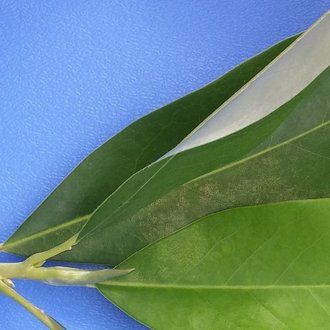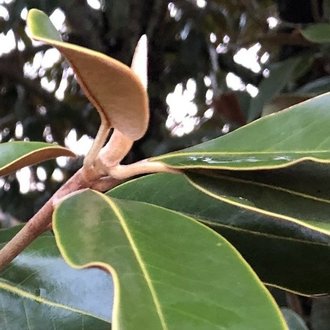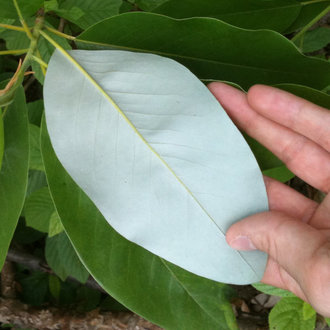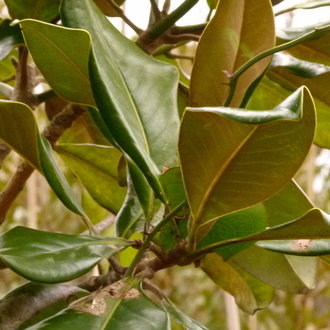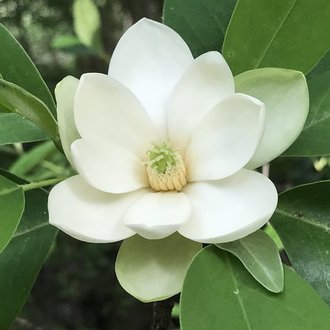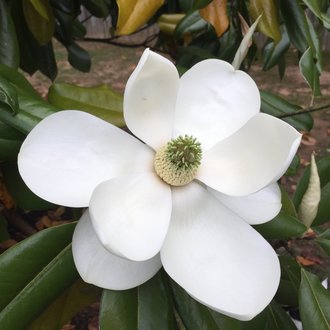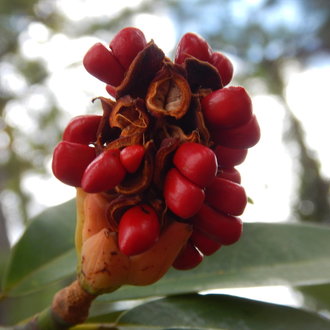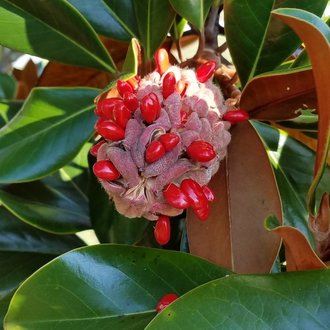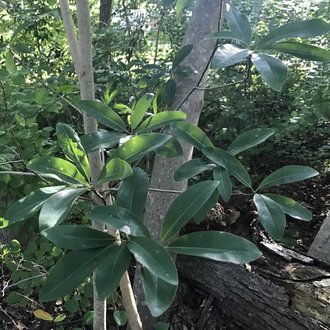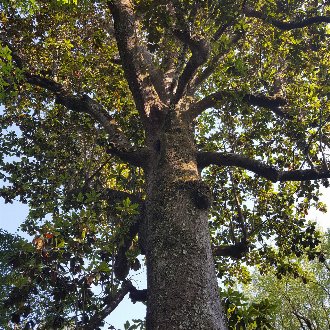Sweetbay Magnolia vs Southern Magnolia
Southern magnolia and sweetbay are sometimes confused due to similiarities in foliage and flowers, but are easily distinguished at any time of year by foliage, flowers, or fruit. Although similar, southern magnolia has thicker, tougher foliage that is darker green above; sweetbay leaves are pale underneath.
Sweetbay Magnolia (Magnolia virginiana) | Southern Magnolia (Magnolia grandiflora) |
A small evergreen to deciduous tree of the southeastern coastal plain, preferring wet, acidic, organic soils. | A native broadleaf evergreen tree of moist, well-drained sites in the deep south, with large, showy white flowers. |
Thinner, more delicate leaves; still thick and tough relative to most deciduous trees. Photo © Jody Shugart, CC BY 4.0. | Thicker, tougher, more leathery leaves. Foliage is often darker green in color. Photo © midadventurers, CC BY-SA 4.0. |
Foliage is whitish on underside. Photo © botanygirl, CC BY 4.0. | Foliage often a dull reddish-brown underneath, but never whitish. Photo © botanygirl, CC BY 4.0. |
Smaller flowers, usually only a few inches across. Photo © Michael Ellis, CC BY 4.0. | Larger flowers, often nearly a foot across. Photo © John P. Friel, CC BY 4.0. |
Smaller fruit cluster, individual berries large relative to the size of the cluster. Berries often look flat-topped or blockier in shape. Photo © Ryan Watson, CC BY 4.0. | Larger fruit cluster, individual berries small relative to the size of the cone. Photo © johnyochum, CC BY 4.0. |
Shrub or small tree, typically multi-trunked. Photo © Michael Ellis, CC BY 4.0. | Large tree, usually single-trunked. Photo © Lillie, CC BY 4.0. |
References & External Resources
These short lists show only links helpful for ID. For a complete list of references and resources also covering other aspects of ecology, visit the links section of the full article on each plant, which is the first entry here.



